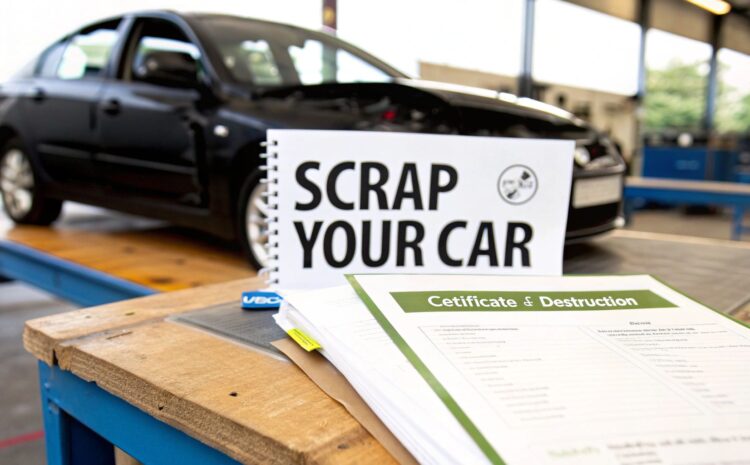
DVLA Scrapping Vehicle Guide | How to Properly Notify the DVLA
When your car finally gives up the ghost, it’s not just a matter of calling a man with a truck. Telling the DVLA you're scrapping your vehicle is a critical legal step. If you miss this, you could find yourself landed with a £1,000 fine. The whole process hinges on using a government-approved scrapyard, known officially as an Authorised Treatment Facility (ATF), and making sure the car is properly taken off the DVLA's books.
Why You Must Go Through The Official Channels
Getting your car scrapped isn't just about selling it for a bit of cash. It's a formal legal process that wipes your vehicle from the DVLA's records for good. Think of it as your final responsibility as the owner. It protects you from any future comeback, like road tax demands, parking fines, or even speeding tickets if the car somehow ends up back on the road illegally.
Until you’ve officially notified the DVLA, you are still the registered keeper, even long after your old car has been turned into a cube of metal.
Cars end up on the scrap heap for all sorts of reasons. I've seen everything from simple old age to catastrophic damage. The most common triggers are:
- Failed MOTs where the repair bill is more than the car is worth.
- Serious accident damage leading to an insurance write-off.
- Catastrophic mechanical failures, like a blown engine or a dead gearbox.
- Soaring running costs, especially for older cars that are no longer economical to run, a problem made worse by the spread of Clean Air Zones like London's ULEZ.
The key takeaway is this: only a licenced ATF has the authority to legally scrap your vehicle and give you the vital Certificate of Destruction. This is your proof that the car has been disposed of correctly and your legal duties are complete.
The image below gives you a quick visual overview of how the process flows from start to finish.
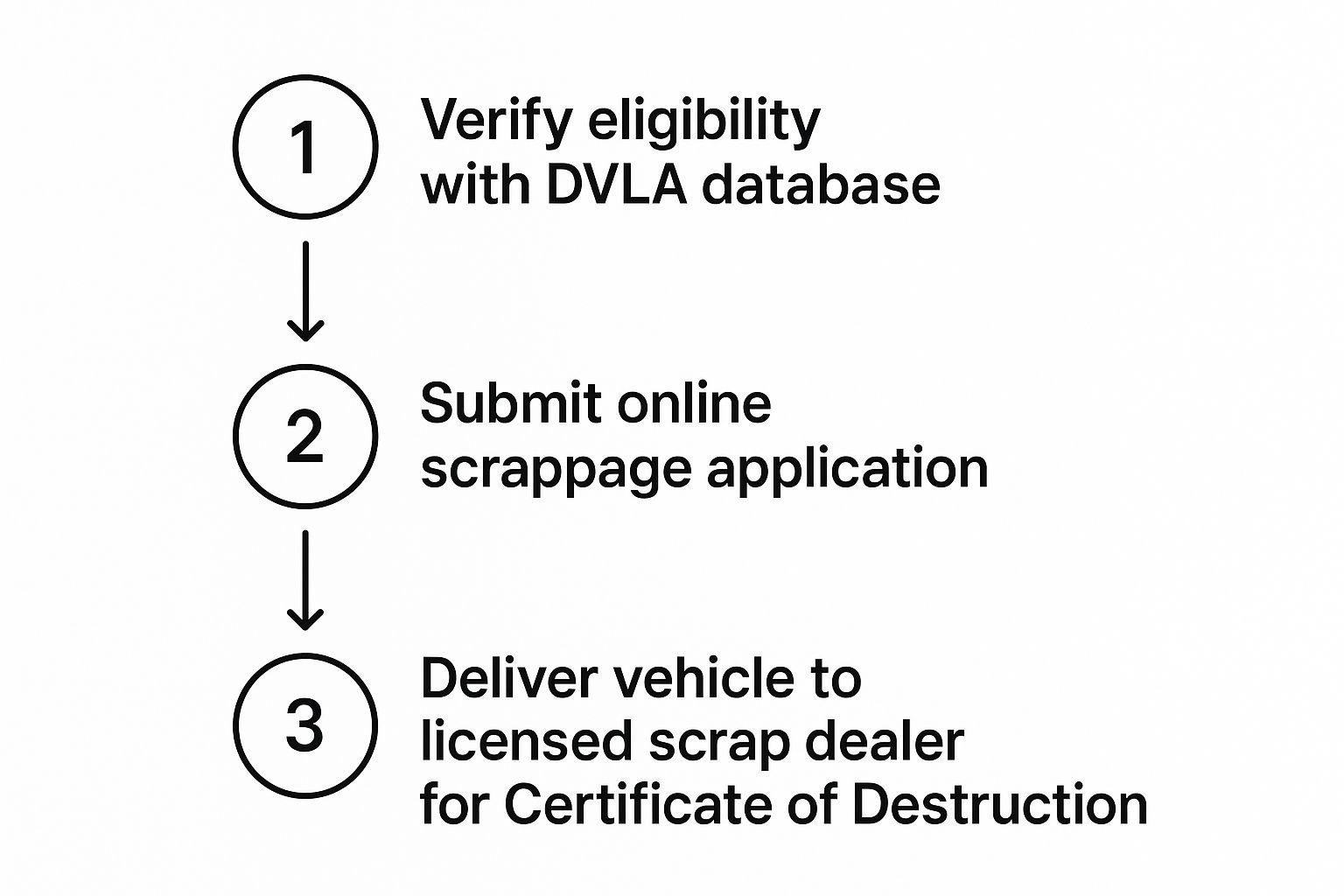
This structured journey isn't just about ticking legal boxes; it's also about doing the right thing for the environment.
Each year in the UK, roughly 1.4 million cars are taken off the road for good, with the overwhelming majority processed through these certified facilities. It's a massive recycling operation. Following the correct procedure ensures that around 85% of every vehicle—from the steel and glass to the plastics and fluids—is properly recycled or reused, with all the hazardous materials handled safely. You can find more detail on this in official UK scrap car industry data.
Getting Your Paperwork Ready for Scrappage
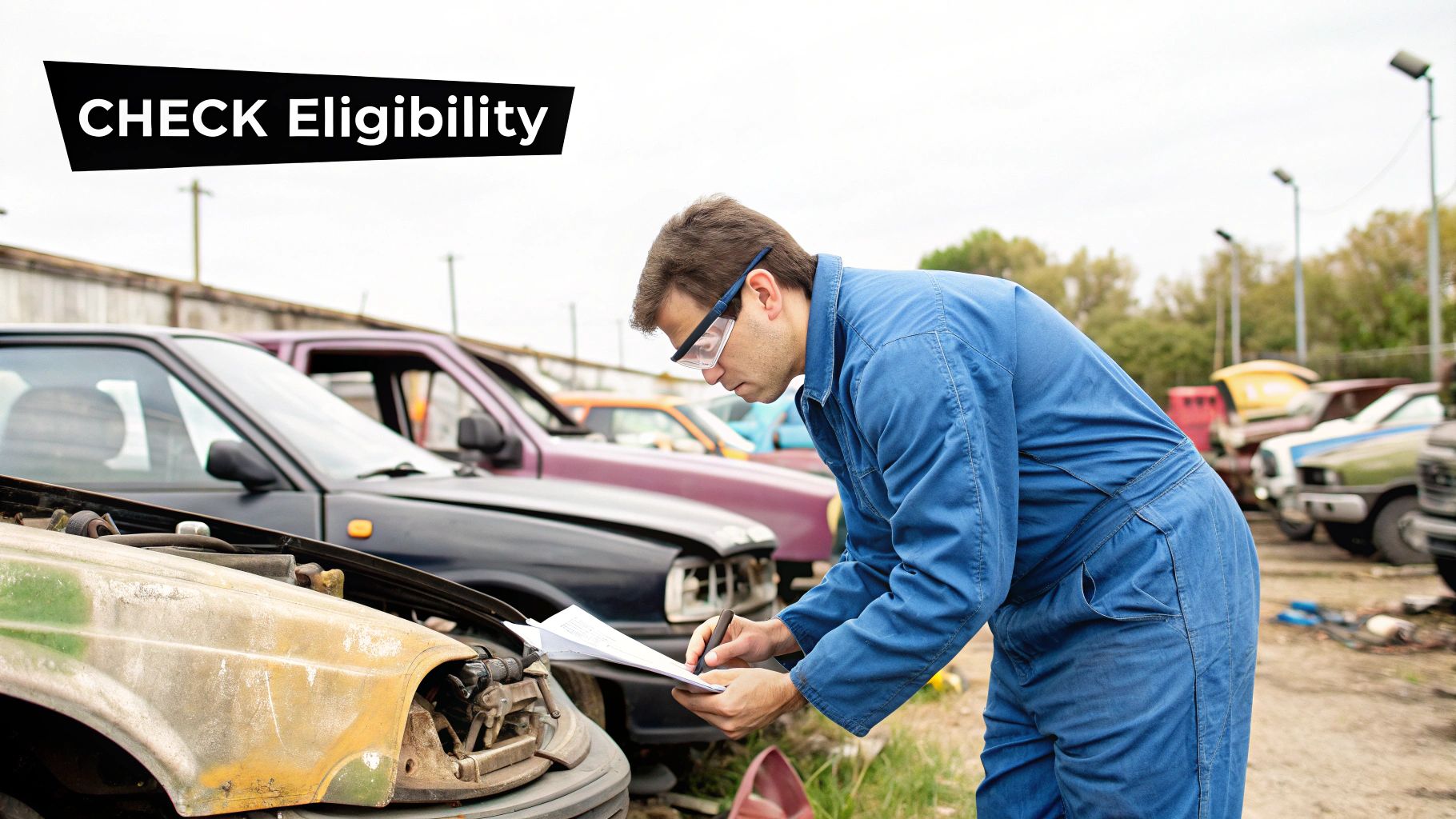
Before any Authorised Treatment Facility (ATF) will look twice at your car, you need to prove it actually belongs to you. Getting your documents in order isn't just a tick-box exercise; it's the most crucial part of making the whole DVLA scrapping vehicle process run without a hitch. Get it wrong, and you're looking at delays and a lot of unnecessary hassle.
The one document that matters most is the V5C logbook. Think of it as your car's birth certificate and your proof of ownership all in one. The specific bit you'll need is the tear-off slip for notifying the DVLA that you've sold or transferred the vehicle to the motor trade.
- For newer, red V5Cs (issued after April 2019), you're looking for Section 4.
- If you have an older, blue V5C, you'll need to fill out Section 9.
This is the part the scrap yard will sign, which you then send off to the DVLA. It's worth noting that other documents, like a detailed service history or old MOT certificates, won't really move the needle on your scrap price. That valuation is almost always based on the sheer weight of the metal.
What if You Cannot Find Your V5C?
It happens more often than you'd think – the V5C goes missing. Don't worry, it's not a deal-breaker. While it makes things a little more complicated, you can absolutely still scrap your car. The ATF will just need some other form of identification to confirm you're the rightful owner.
You’ll need to have your photo ID ready, like a current driving licence or passport, along with a recent proof of address. A utility bill or bank statement from the last three months will do the trick. For any reputable ATF, this is non-negotiable proof of ownership.
Without the V5C, the responsibility falls on you to tell the DVLA what's happened. You'll need to send them a letter that includes your details, the car's registration number, the date you sold it for scrap, and the full name and address of the ATF that collected it. For a more detailed walkthrough, you can https://fastscrapcar.co.uk/how-to-scrap-your-car/.
This paperwork is the key to legally and responsibly disposing of your vehicle. With a recent 12% rise in SORN declarations, it's clear that more people are taking cars off the road, often leading to them being scrapped, especially with the expansion of emissions zones.
Finding the Right Place to Scrap Your Car
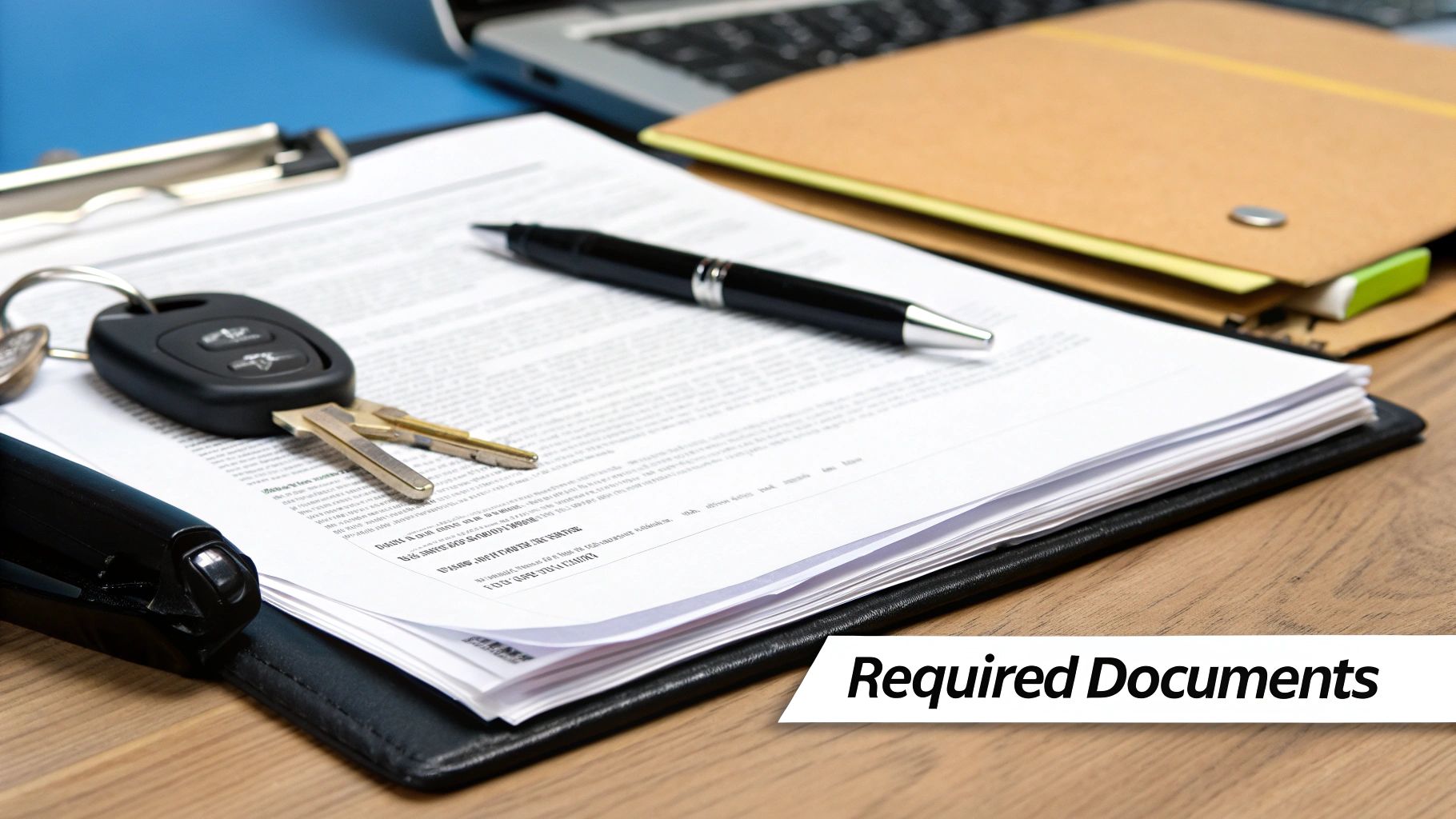
So, you're ready to get rid of your old car. You can’t just drop it off at the nearest scrapyard you find in the local paper. To do things by the book, you are legally required to use a government-approved Authorised Treatment Facility (ATF). These are the only places that can legally scrap a vehicle and give you the all-important Certificate of Destruction (CoD).
Going with an unlicensed operator might seem tempting, maybe even easier, but it's a risky game. If they don't dispose of your car correctly, you could remain legally responsible for it. That means potential fines and penalties down the line. It's just not worth the headache.
The first thing I always tell people is to check a company's credentials. It’s surprisingly easy. You can verify licensed waste carriers on the Environment Agency’s public register.
Any legitimate ATF will have its licence number displayed clearly on its website. If you can't find it, that’s a massive red flag. Don't be shy about asking for it directly and running it through the database before you agree to anything.
Look Beyond the Scrap Price
We all want the best price for our old motor, but that shouldn't be the only thing you focus on. An offer that seems too good to be true often is. It could be hiding sneaky fees or just be a sign of a dodgy operator. When you're weighing up your options, you need to look at the whole picture.
Here are a few things I always check:
- Free Collection: Will they pick the car up from your home or garage for free? Some places tack on a collection charge, which quickly chips away at what you get paid.
- No Hidden Fees: Be upfront and ask if there are any administration charges or other costs. A professional outfit will be transparent about their pricing from the get-go.
- Customer Reviews: Have a look at recent, independent reviews on sites like Google or Trustpilot. Real experiences from other customers tell you a lot about the service you can expect.
A good ATF will never put you under pressure. They’ll give you a clear, no-obligation quote and be happy to walk you through their process and show you their licence. That kind of transparency is the hallmark of a service you can trust.
It's also worth noting that big government schemes rely on these trusted partners. Take London’s ULEZ Scrappage Scheme, for instance. Launched in early 2023, it caused a huge spike in vehicle scrapping. With over £188 million committed and more than 54,000 applications approved by September 2024, these initiatives depend on properly vetted ATFs. You can read more about the scheme’s impact in Transport for London's reports.
Taking the time to choose the right ATF means your car is handled legally, and you get that crucial proof of disposal. It’s the final step to officially closing the loop on your ownership and responsibility.
Completing the Official DVLA Notification
Once the scrap company has collected your car and it's on its way to the Authorised Treatment Facility (ATF), you've got one last, crucial job to do. You absolutely must notify the DVLA that you've scrapped it. This isn't just a bit of paperwork; it's the step that legally separates you from the vehicle, protecting you from any future headaches like fines or penalties.
Thankfully, you've got a couple of straightforward ways to get this done. Really, it just comes down to whether you prefer doing things online or sticking with the classic paper-and-post method.
The Fast Online Method
By far the quickest way to get this sorted is through the DVLA's online service. It’s designed to be instant, and you’ll get an email confirmation right away confirming you're no longer the registered keeper. Job done.
To go down this route, you’ll need a couple of things to hand:
- The 11-digit reference number from the yellow slip of your V5C logbook (that's Section 4 for newer V5Cs or Section 9 for the older style).
- The name and address of the ATF that collected your car. Your scrap service will have given you this.
The government's official page to start this process looks like this:
Using this portal is your direct line to the DVLA's records. It removes any doubt or potential postal delays, giving you immediate peace of mind.
The Traditional Paper Route
If you're not a fan of online forms or simply don't have internet access, you can still do it the old-fashioned way using your V5C logbook. You'll need to fill out the yellow slip – again, that’s Section 4 (or 9 on older logbooks) – making sure both you and the person from the ATF have signed and dated it.
A Quick Tip From Experience: Before you pop that slip in an envelope, take a quick photo of it on your phone. This gives you a personal record and a solid piece of evidence if anything goes astray in the post.
Once that's done, you send this completed section to the DVLA address printed on the form itself. If you want to be extra safe, consider sending it via recorded delivery. Just be aware that this method isn’t instant; you're relying on the post, and it can take a few weeks for the DVLA to process everything on their end.
It's vital to remember that this notification process is specifically for when a car is being permanently destroyed. If you're just taking a vehicle off the road for a while and plan to use it again, you'll need to follow a different procedure. In that case, you might find our guide on how to SORN your vehicle helpful.
Securing Your Certificate of Destruction
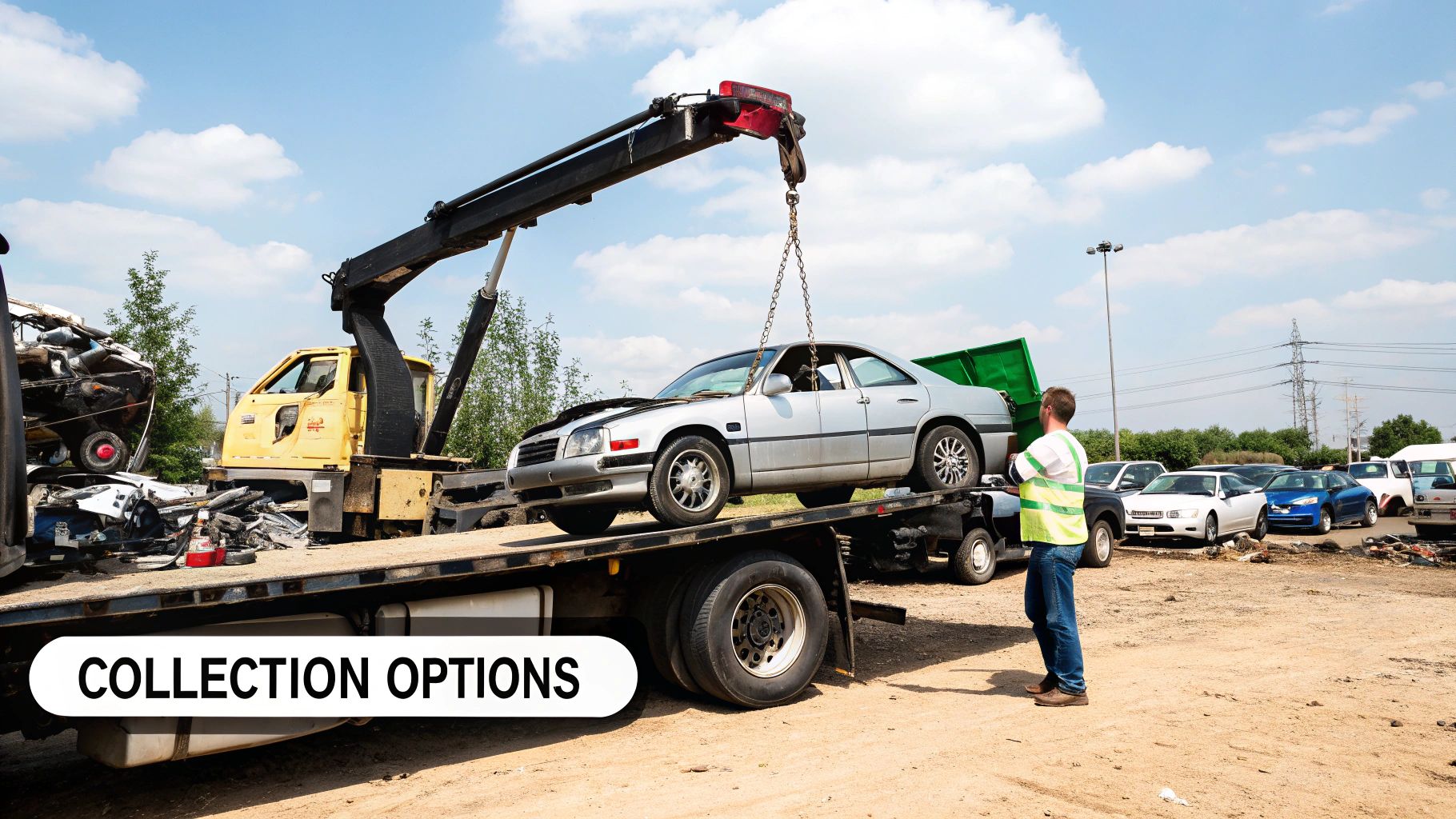
Just because your old car has been collected doesn't mean your job is done. Your legal responsibility only truly ends once you have proof that the vehicle has been properly and permanently taken off the road.
This crucial proof is the Certificate of Destruction (CoD). It’s the only official document recognised by the DVLA that confirms your car has been scrapped, protecting you from any future fines or tax demands.
It's really important to remember that only a licensed Authorised Treatment Facility (ATF) can issue a CoD. This isn't just a piece of paper; it’s a legal guarantee that your car has been handled correctly and won't reappear on the roads, potentially racking up penalties in your name.
What to Expect After Your Car Is Gone
Once the collection driver leaves with your car, the ATF gets to work. They’ll depollute it—draining all the fluids like oil and petrol—before recycling the shell and its components. Only after this process is complete will they issue the Certificate of Destruction.
- When will it arrive? You should receive your CoD within seven days of your car being collected. It's usually sent by email, so keep an eye on your inbox and don't forget to check your spam folder, just in case.
- What if it's late? If a week goes by and there's no sign of it, get on the phone with the ATF. Don't be shy about chasing it up. Have your car's registration number handy to speed things up.
Think of the Certificate of Destruction as the final, most important receipt you'll get. It’s your official confirmation that you've followed the rules and are no longer responsible for the vehicle. It's wise to save a digital copy and print one for your files.
With your CoD in hand, you’re on the home straight. There are just a couple of loose ends to tie up.
First, you don’t need to apply for a road tax refund. When you notified the DVLA that you'd scrapped the car, you started an automatic process. You’ll get a cheque in the post for any full months of remaining tax you'd paid for.
Lastly, and this is the one people often forget, call your insurance provider and cancel the policy. There's no point paying to insure a car that has been turned into a metal cube
Got Questions About Scrapping Your Car? We’ve Got Answers
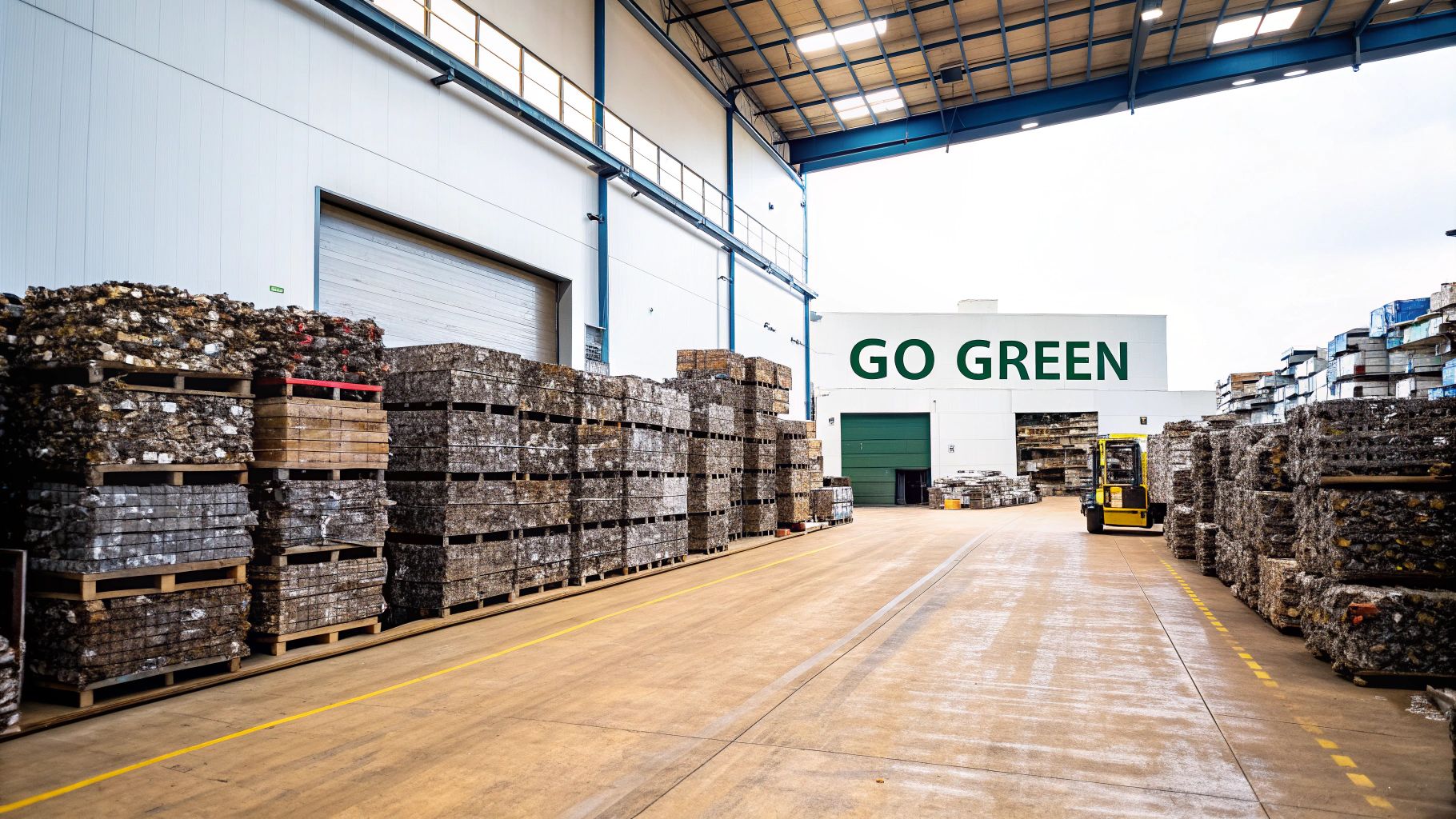
When you're scrapping a car, a few common questions always seem to pop up. Getting the right answers is crucial for a smooth process and, more importantly, for keeping everything above board with the DVLA.
One of the biggest worries we hear is, "What happens if I don't tell the DVLA I've scrapped my car?" The simple answer is: you don't want to find out. The DVLA can hit you with a fine of up to £1,000. Even worse, you'll still be the legally registered keeper. This means any speeding tickets or tax bills tied to that registration number land squarely on your doorstep.
Another frequent panic is a lost V5C logbook. Don't worry, it's not a deal-breaker. You can absolutely still scrap your car.
Scrapping Your Car Without the V5C Logbook
Any reputable Authorised Treatment Facility (ATF) will work with you, but they'll need to confirm you're the rightful owner. It's a simple identity check.
You’ll just need to show them:
- Photo ID: A valid passport or your driving licence works perfectly.
- Proof of Address: A recent utility bill or a bank statement with your current address will do the trick.
After your car has been collected, you have one extra job to do. You'll need to send a letter to the DVLA yourself. Make sure it includes the date of sale, your details, the car's registration, and the full name and address of the scrap yard (the ATF). This is your way of officially transferring legal responsibility.
No matter how you do it, telling the DVLA is the one step you cannot skip. Whether it's online using the V5C or by post because you've used other ID, it's your final responsibility.
Finally, what about your road tax refund? Good news here – this is completely automatic. As soon as the DVLA processes the notification that your car has been scrapped, they’ll calculate a refund for any full months of tax you have left. A cheque will be sent straight to the address they have on file for the registered keeper. You can also see how scrappage schemes work to understand all the potential financial benefits.
